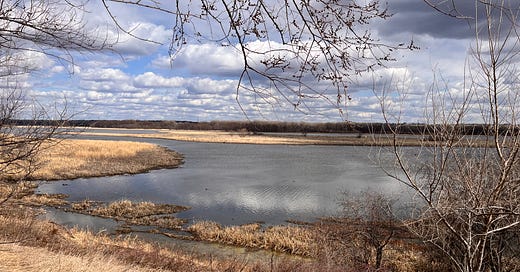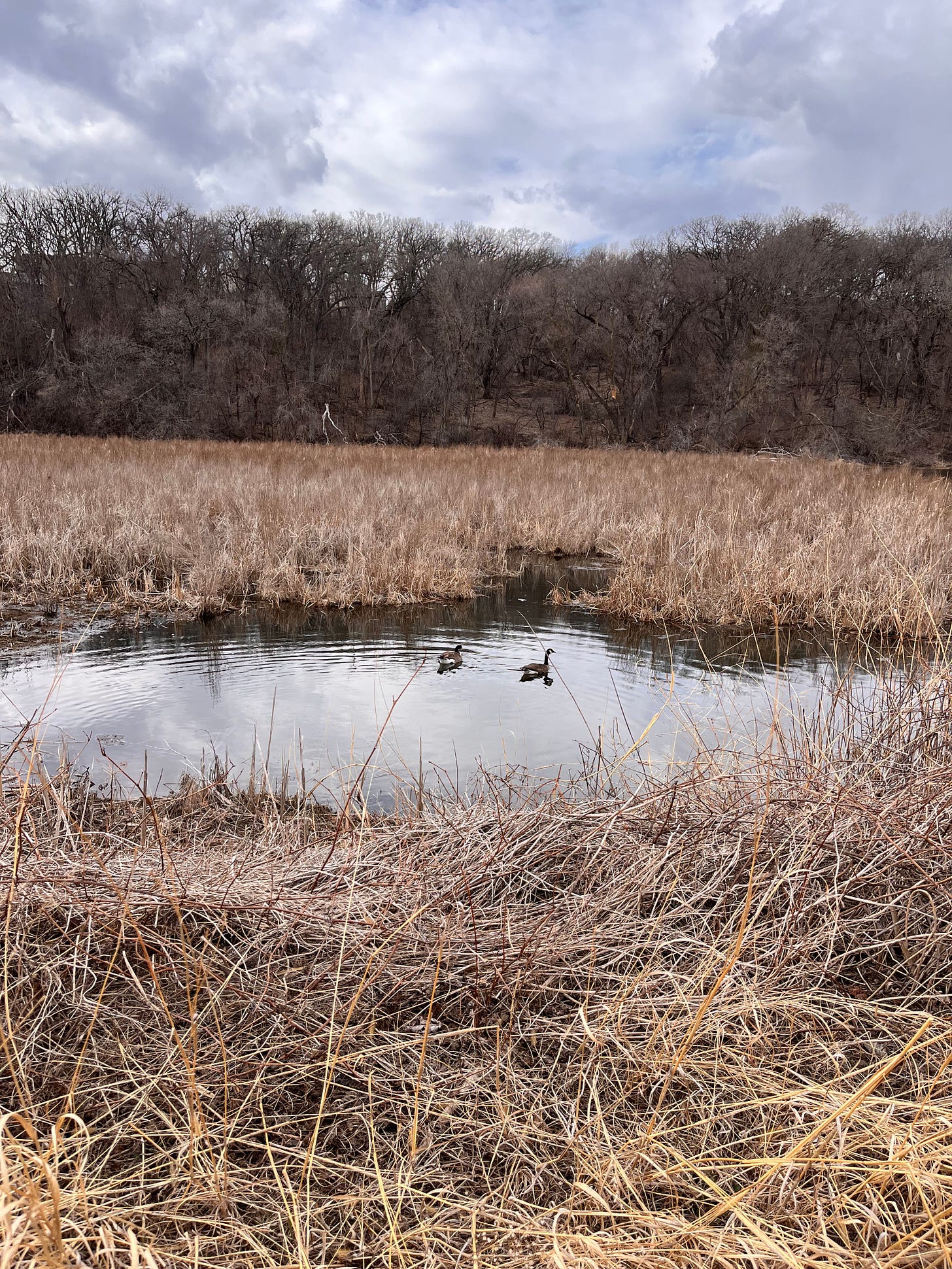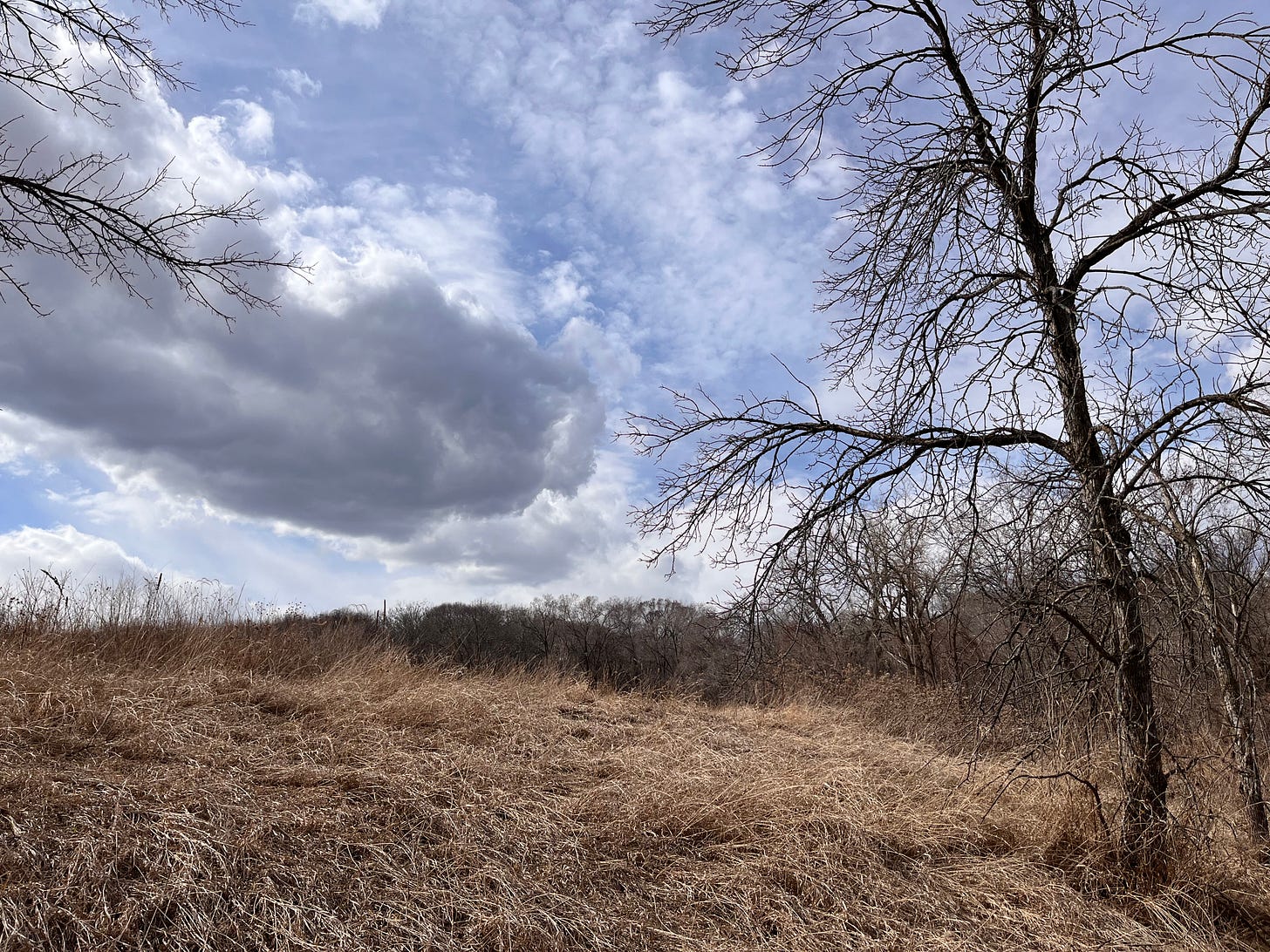See how I open into life, says spring, like a planetary rose unfurling an infinitude of petals. See how I remake the world.
She conjures bright yellow willow whips, undulating with the wind’s breath.
She shapes a flotilla of cumulus-masted ships, overlooking ruffled waters.
She stirs up sleeping frogs and fish in the rivers and wetlands in preparation for the first great waves of waterfowl already migrating up North America’s major migratory corridor: the Mississippi River Flyway.
Into this great flyway spills the wide floodplain of the Minnesota River; and in that floodplain stretches a long, marshy lake of variable temperament.
Fifteen feet of muddy water drowned this lake’s tallest cattails for weeks last spring — but now, its edges barely tickle the shins of the slow-stalking Yellow Legs.
Ever-shifting flocks of divers and dabblers are chased here by southerly winds, some nesting, others resting before winging on to their breeding grounds.
As your tour guide, let me point out the ever-present bald eagles, Canada geese, gulls and mallards. They now share their muddy lake with migrating mergansers, gadwalls, golden eyes. Swans, shovelers, scaups, teals. The extremely handsome wood duck — who would prefer you not to stare — and, just arriving, the majestic floating smoke called great blue heron.
Out on a muddy scrim of water, ring-billed gulls huddle in a bright, companionable mass, speaking their urgent language of shrieks and wails. Single birds leap into the sky and circle, for no reason I can see, then settle back among their kin. A restless yet peaceful scene.
Suddenly from behind me, a juvenile bald eagle sweeps in, angling for the water. Before I can even clock what is happening, eagle is reaching down his bright yellow talons. The entire flock bursts up screaming, their collective wings audibly beating the air.
As the dark-feathered eagle blazes back into the upper realms of the sky, and the gulls settle themselves back onto the lake, I peer up at him through binoculars.
His talons, I note, are empty.
Each day is a chance to survive, spring would say, if she could.*
Emerging from the passage tomb of winter, sour and sere, I follow the signposts. This way lays the frozen track; that way, the living one.
No fillet of fenny snake, nor wing of owlet, doth power my spring-summoning charm. My cauldron holds only tea of nettle and sweet sap of sugar maple, running fast down the tree, all stirred three times sun-wise with a wild turkey feather.
At last, spring blows a sliver of sweetness into me. A playfulness, a capering — a sudden urge to eschew polite greetings and instead let the nasal cha! cha! cha! of red-bellied woodpecker burst from my lips.
This, I do not do.
Even so, blue jay perched on a branch reads my mind, and jeers loudly at my foolishness.
Little American tree sparrows edge the dusty trails, devouring grit and grass seeds, quick as a wink. A clutch of sandhill cranes silently wing along the edge of the lake, pale brown backs descending to a hidden point below the bluff.
I walk on under a steady sun, wrapped in layers of metaphorical shawls, feeling a softening in my winter carapace.
Once upon a time, my love, the fierce red-winged blackbird, marked me as his own.
Call him a winged nemesis, call him guardian of the marshlands. I ventured too near his nest in the cattails and was claimed with a skin-shivering scrape of claws along my scalp.
He who flies on the backs of eagles, audaciously pecking white-feathered heads, suffers no kings, admits no fears, knows no surrender.
Along every wetland path, a battalion of blackbirds call, clarion voices ringing through the reeds. They fluff out their glossy wings, flash their red epaulets edged in yellow, claim their territory. We will be heard, they say. Watch us protect what is important.
Life is what is important. Life is what is worth protecting. You, I, all beings who are at home in the world know this; most especially, blackbirds in spring.
Already, in late March, the tide of life pours in so fast I cannot keep up with it or count it or hold it. I am out of the practice of living in four dimensions. Winter and too much domesticity have sent me into torpor, flattened me into a fretful shadow.
But I do feel life stir, in a deep and ancient part of me where the morning of the world lives.
Where each spring feels as joyful as my first, and as poignant as my last.
I feel life’s green fingers questing for an answering place in me — a place that leaps, regardless of lack, or drought, or hardship — in the flowering presence of life, eternal as spring.
May blackbirds ever sing,
Carmine
* Amy Tan also says this in her lovely book The Backyard Bird Chronicles.








You are a delicious writer.
Lovely words, lovely voice…I will listen again…